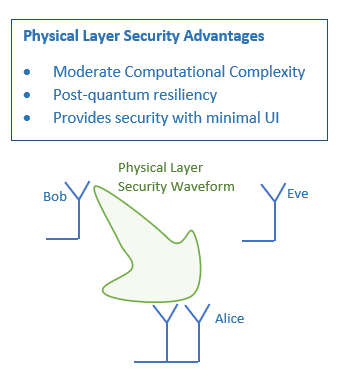Physical Layer Security (PLS) is important for protecting the information shared between devices on 5G and next generation networks. This is especially true for IoT devices. The number of deployed IoT devices is growing exponentially. These devices have limitations that make physical layer security more applicable than security applied in other layers of the TCI/IP network model.
IoT devices generally are:
- CPU resourced constrained
- Battery powered (power limitations)
- Lack a UI interface
Traditional cryptography and key sharing algorithms are well optimized and CPU efficient, but when the number of connections and communication channels becomes large, the number of resources can be exhausted. Eventually, quantum computing will break public key encryption schemes, rendering them useless. Future post-quantum cryptography algorithms are going to have computational complexity much greater than traditional cryptograph algorithms, but research is ongoing.
Physical Layer Security is an attractive solution to IoT security because it transforms a computational mathematical problem to a physical problem. The waveform of an IoT device to can be shaped such that the SNR at the destination receiver is greater than that of the eavesdropper receiver. The potential solutions for PLS are:
| · Transmit Beamforming · Receive Beamforming · Cooperative Relays · Artificial Noise · Zero-Forcing · Directional Modulation · Channel Based Key Generation |  |
Devices which deployed PLS today are custom solutions for controlled communication channels. In order for Physical Layer Security to be deployed on a wider basis, standardization of a PLS scheme will be required.